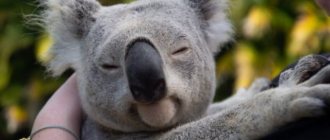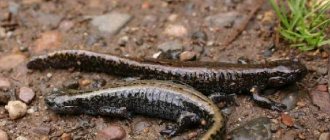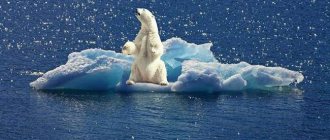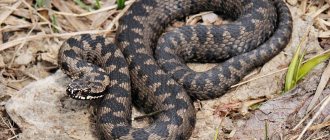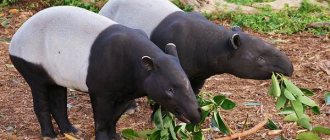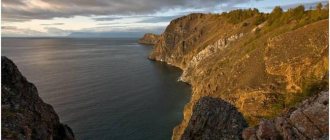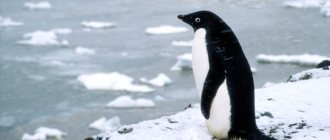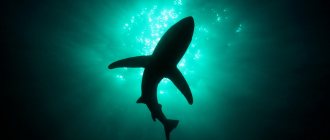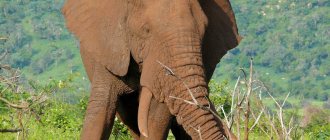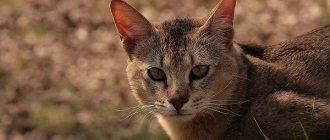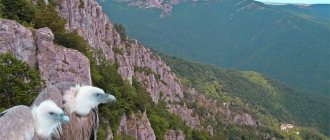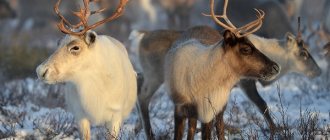Sub-zero temperatures, months of darkness and some of the strongest winds on Earth. How does life survive in this vast polar desert?
Despite its many challenges, Antarctica is teeming with life. It is home to billions of krill, millions of seals and more penguins than anywhere else on the planet.
Read on to learn about this remarkable wildlife and their amazing adaptation to a continent so cold and arid that some scientists compare it to the Moon.
Antarctica is a continent located in the very south of the Earth.
Penguins
When it comes to Antarctic wildlife, penguins often attract attention. Eight of the world's 18 penguin species live in Antarctica and the sub-Antarctic islands.
Although these flightless seabirds can be a little clumsy on land, they are excellent swimmers.
With streamlined bodies like torpedoes, they use their flippers like wings to propel themselves through the water and their paws (and sometimes their tail) to control their course.
Penguins feed at sea, come ashore to breed, rest and replace all their feathers during the annual catastrophic molt.
Through their mathematically precise gatherings and pebble-stealing tricks, they have developed some truly remarkable ways to thrive in this harsh environment.
Let's learn a little about some of the penguin species that live in Antarctica.
Emperor penguins
Emperor penguins are the largest penguin species on the planet.
Scientific name: Aptenodytes forsteri.
Height: average 1.1 - 1.3 m (43-51 in).
Weight: 22 to 45 kg (49 to 99 lb).
Average life expectancy in the wild: 15-20 years.
*IUCN Red List Status: Endangered.
Emperor penguins, the largest penguin species on the planet, live further south than any other penguin.
While most penguins migrate north for the winter, emperors head south to breed in colonies up to 200 km (125 miles) off the coast.
In these icy colonies, emperor penguins can withstand temperatures as low as -50 °C (-58 °F) with wind gusts of up to 200 km per hour (124 mph).
They form dense clumps that are so effective at creating heat that the penguins at the center of these cozy formations can enjoy temperatures of up to 37°C (100F) even when the air temperature is well below freezing!
Emperor penguins feed primarily on fish, krill and squid, and their remarkable diving skills give them access to some of the coldest and richest bodies of water on Earth.
The emperor penguin's deepest recorded dive reached 565 m (1,850 ft), deeper than any other bird.
They can remain underwater for 20 minutes, but the average dive time is about five minutes and ranges from 100 to 200 meters (328 to 656 ft).
Emperor penguins cannot fly, but they can jump up to three meters.
They do this by diving deep and filling their feathers with a cloak of bubbles, which helps them fly into the air and onto the ice!
Adelie Penguins
Adélie penguins are the smallest penguin species in Antarctica.
Scientific name: Pygoscelis adeliae.
Height: 46 to 71 cm (18 to 28 inches).
Weight: 3.6 to 6.0 kg (7.9 to 13.2 lb).
Average lifespan in the wild: 10–20 years.
IUCN Red List Status: Endangered.
These are the smallest penguin species in Antarctica.
Known for their sleek black and white tuxedo-like coloring, the distinctive white ring around their eyes is an important distinguishing feature.
Like emperor penguins, Adélie penguins live and breed exclusively in polar regions. In fact, they are the only two species of penguins that live permanently in Antarctica!
However, Adélie penguins have more in common with gentoo and chinstrap penguins, which belong to the brush-tailed penguin family.
Colonies of Adélie penguins can be found on the rocky coasts of Antarctica, where they build nests from small rocks.
In addition to providing a hiding place for the incubation of eggs and young penguins, pebbles can be brought to the object of affection as part of a courtship ritual, and Adélie males are well known for their cheeky pebble-stealing antics.
Adélie penguins lay two eggs each year, which hatch in early summer (usually December/January).
After about a month, Adélie chicks are ready to leave the safety of their parents' nest and join other penguins in noisy groups called crèches.
After 2-3 months, their fluffy plumage is replaced by adult feathers, and they are ready for life at sea.
Adélie penguins eat fish and squid, but they rely on krill for the majority of their diet.
This dependence on krill makes them vulnerable to changes in ocean conditions. On the rapidly warming Antarctic Peninsula, their numbers have decreased by 70-90% since 1982.
Despite this, their numbers are growing throughout Antarctica.
Penguins of Ghento
Gentoo penguins are the third largest penguin species in the world.
Scientific name: Pygoscelis papua.
Height: 51 to 90 cm (20 to 35 inches).
Weight: 4.5 kg - 8.5 kg (9.9 - 19 lbs).
Average lifespan in the wild: 15–20 years.
IUCN Red List Status: Least Concern.
Gentoo penguins are the third largest member of the penguin family and are found on the Antarctic Peninsula and several sub-Antarctic islands.
Their distinctive orange bills and peach-colored legs create a bright pop of color against the harsh landscape.
Like Adélie penguins, they search for ice-free areas for their colonies, building nests out of stones.
They can often be found congregating on low-lying rocky beaches in groups ranging from a few to several thousand.
They usually lay two eggs, sometimes three. The babies are born in early summer (December/January) and gather in crèches with other penguins for a month.
In March, they get acquainted with the water, fledge and begin to get food for themselves.
Gentoo penguins have a varied diet of fish, squid and krill.
This flexibility has made them resilient to changes in ocean temperatures and declining sea ice cover.
Although the Adélie penguin population is declining on the Antarctic Peninsula, the number of Gentoo penguins is increasing.
They can dive to depths of 200 m (655 ft) and stay underwater for up to seven minutes, but their main strength is their speed.
They are the fastest penguins on Earth, capable of swimming at speeds of up to 36 km/h (22 mph).
Chinstrap penguins
Chinstrap penguins are the most numerous penguins in Antarctica.
Scientific name: Pygoscelis Antarcticus.
Height: average 68–76 cm (27–30 in).
Weight: 3.2–5.3 kg (7.1–11.7 lb).
Average lifespan in the wild: 15–20 years.
IUCN Red List Status: Least Concern.
Brave and found on the Antarctic Peninsula, as well as several Antarctic and sub-Antarctic islands, they are the most numerous penguins in Antarctica.
The remote South Sandwich Islands archipelago has huge colonies of about 1.2 million breeding pairs, as featured in the BBC film Planet Earth II.
Their name comes from the black line under the chin, which, combined with the black cap coloring of the head, makes them look like a small helmet.
Cetaceans
Antarctic waters have been chosen by the largest living creature on the planet - the blue whale. The length of its body reaches 30 meters, and its weight is 150 tons. This mighty mammal navigates the vast waters of the Southern Ocean like a huge ocean liner. During the cold winter months, it moves north and ends up in the latitudes of Australia and Madagascar. But in the spring it hurries south to fully enjoy the pleasant coolness of Antarctic waters.
humpback whale also lives in the Southern Ocean.
. It is half the length of the blue whale and weighs five times less. But its size is still impressive, and its violent temper forces people to behave more carefully if they find themselves dangerously close to this mammal.
The ubiquitous killer whale is also a regular in Antarctic waters. It represents the most formidable and powerful predator in this region. Both whales and seals suffer from it. But Antarctic animals suffer much greater damage from human predatory activities. For the last 200 years, he has mercilessly and purposefully exterminated the rich fauna of the cold south. The result was not long in coming. Many species are on the verge of extinction. Nowadays, thanks to laws and bans aimed at saving animals, the situation is slowly but steadily improving.
♦ ♦ ♦
Antarctica is a continent with harsh climatic conditions. Temperatures on most of the continent never rise above freezing, and the entire continent is covered in ice. However, the Southern Ocean surrounding Antarctica is one of the most amazing ecosystems on Earth and is home to many incredible creatures.
Most animals are migratory, since the climate of the continent is too difficult for permanent residence and wintering.
At the same time, many species are found only in Antarctica (animals that live only in one area are called endemic) and have managed to perfectly adapt to the harsh environment. Since Antarctica was only discovered 200 years ago, native species are not accustomed to human society, which leads to one of the most surprising things about Antarctica's wildlife: they find people as interesting as they are to people. For visitors, this means that most animals can be approached without them running away, and for researchers, it means an opportunity to better study Antarctica's fauna. However, it is necessary to take into account the fact that the Antarctic treaties prohibit touching wild animals!
In this article, we have compiled a list with a brief description and photo of some famous representatives of the fauna of the coldest continent on the planet - Antarctica.
Seals
From the crabeater seal that doesn't eat crabs to the Weddell seal that sings like a space invader, Antarctic seals are adorable and sometimes a little furry.
Protected by the Convention for the Conservation of Antarctic Seals, these marine mammals reside in the cool haven of the Southern Ocean.
Let's take a closer look at some of the most common seals in Antarctica.
Weddell seal
Weddell seals are the southernmost breeding mammal on Earth.
Scientific name: Leptonychotes weddellii.
Length: average 2.5–3.5 m (8 ft 2 in – 11 ft 6 in).
Weight: 400–600 kg (880–1,320 lbs).
Average life expectancy in the wild: 30 years.
IUCN Red List Status: Least Concern.
Weddell seals are the southernmost breeding mammal on Earth.
They never stray too far from home, preferring to stay within 50–100 km (31–62 mi) of their rookeries on the fast ice surrounding Antarctica.
During the summer, Weddell seals roam the sea ice to feed on small fish, crustaceans, and other small marine life—sometimes even penguins! They go out onto the ice to rest.
When the ocean turns to sea ice, they cut holes in the surface with their sharp fangs and incisors.
They use these openings, often called breathing holes, to access the abundant water below.
Weddell seals are amazing divers and seafarers, diving to depths of up to 700m and remaining underwater for up to 80 minutes before returning to their small breathing holes, even in the 24-hour darkness of the depths of winter.
This is a wonderful but dangerous system. Keeping these breather holes from freezing requires constant maintenance.
Over time, their teeth wear down and they lose the ability to support their own breathing holes. This is believed to be a common cause of death in Weddell seals.
Known for its remarkable calling, the Weddell Seal's complex symphony of otherworldly chirps and chimes has been described by some as a "sci-fi spaceship" or the call of a distant alien civilization!
Crabeater seals
Crabeater seals are the most abundant seal species in the world.
Scientific name: Lobodon carcinophaga.
Length: average 2.3 m (7.5 ft).
Weight: 200 kg (440 lbs).
Average life expectancy in the wild: 20-40 years.
IUCN Red List Status: Least Concern.
With a circumpolar distribution and an estimated population of up to 15 million, the crabeater seal is the most abundant seal species in the world.
They spend most of their lives around the pack ice surrounding Antarctica, although vagrants have been seen as far north as Australia.
In 2016, a lone crabeater seal was spotted on Anglesey Beach in Victoria!
Oddly enough, crabeater seals do not eat crabs. Their name, which has confused many travelers, comes from the German word "krebs", which means crabs, crayfish and crustaceans in general.
Crabeater seals eat more krill (Euphasia superba) than any other seal species on Earth.
After gulping down krill and seawater, they use their specialized lobed (lobodontine) teeth to filter the water.
It's always a pleasure to see these sociable seals gathering in small groups on the ice floes around the Antarctic Peninsula.
They are most often seen in groups of fewer than ten individuals, but there have been reports of huge groups of up to 1,000 crabeaters taking to the ice to rest, molt and breed.
Leopard seals
Leopard seals are the second largest seals in Antarctica.
Scientific name: Hydrurga leptonyx.
Length: average 2.4–3.5 m (7.9–11.5 ft).
Weight: 200 - 600 kg (440 - 1320 lbs).
Average life expectancy in the wild: 12-26 years.
IUCN Red List Status: Least Concern.
The second largest of the Antarctic seals, leopard seals are solitary animals and formidable hunters.
They have a broad diet, which, unlike other Antarctic seals, includes other marine mammals.
Leopard seals are not picky eaters and will happily dine on a variety of fish, squid, small crustaceans, penguins and even small seals.
Highly efficient predators, their sleek, snake-like bodies move stealthily through the water at speeds of up to 40 km/h (25 mph), while their powerful jaws securely grip prey.
Despite their fearsome reputation and penchant for preying on the feathered and furry, nearly half of a leopard seal's diet consists of krill and small crustaceans.
They consume them by filter feeding through teeth with special grooves, like a crabeater seal.
Female leopard seals are larger than their male counterparts, growing up to 3 meters (10 ft) and weighing 590 kg (1,300 lb).
Found off the coast of Antarctica and sub-Antarctic islands, they were spotted on beaches around Tasmania in 2017.
Southern elephant seals
Southern elephant seals are the largest seals on the planet.
Scientific name: Mirounga leonina
Length:
- Females are 2.6 to 3 m (8.5 to 9.8 ft).
- Males are 4.2 to 5.8 m (14 to 19 ft).
Weight:
- Females 400 to 900 kg (880 to 1,980 lb).
- Males 2,200 to 4,000 kg (4,900 to 8,800 lb).
Average life expectancy in the wild: 21 years.
IUCN Red List Status: Least Concern.
The giants of the Antarctic seal, southern elephant seals are the largest seals on the planet and the largest mammals on Earth, excluding whales.
Unusual places
Snow, ice, water, rocks, amazing glaciers - these are the main elements of the beauty of Antarctica. Despite the snow-covered surfaces, there are such unusual places here, the existence of which makes you wonder and admire. About 35,000 tourists come here every year to admire some of the unique natural conditions, who will probably remember such a trip for the rest of their lives.
Paradise Harbor
In this amazing place, you can observe in all its glory the main natural attraction of Antarctica - huge icebergs.
In this area, tourists have the opportunity to view them at arm's length. But only 1/10 of the ice mountains is visible, while the main part is hidden under water.
Port of Leith
In the old days, Port of Leith was the largest whaling center in the world. But after hunting for these animals was banned, all residents left the town en masse and for more than half a century it has existed as a ghost town.
In addition to dilapidated houses, there is also an abandoned library and hospital, and the silence is only occasionally broken by the cry of albatrosses.
Lemaire Strait
The strait is a “corridor” of bizarre iceberg shapes that annually attracts thousands of photographers and tourists.
Due to this popularity, polar explorers often call the strait the “Kodak Gap”. After all, as soon as the ship approaches the strait, there is immediately an endless noise from the clicking of cameras.
dry valleys
This is one of the most amazing places in Antarctica and the entire planet, since there has been no rainfall here for more than 2,000,000 years.
The reason for this is phenomenal winds, the speed of which reaches 320 km/h. They cause moisture to evaporate and prevent snow from staying here. The conditions here are closest to those on Mars, so NASA even used these places to test spacecraft.
Lakes and rivers
As surprising as it may sound, there are lakes and rivers in Antarctica, but they appear in the summer and are covered with ice again in winter. In total, there are more than 140 subglacial reservoirs, but what makes them amazing?
- The most famous is the lake called Vostok, located near the Russian station of the same name. Its main secret is the geothermal springs located under the water column, which maintain the temperature of the lake at 10°C, but it is covered by a 4-kilometer layer of ice.
- Lake Vanda is another unusual place located in Victoria Land, which extends for 5 km and has a depth of up to 69 m. The temperature at the bottom of the lake reaches +25°C. But there are no underwater inhabitants or even vegetation here due to the extraordinary salinity of the water, which significantly exceeds that of the Dead Sea.
- The Onyx River is 40 km long, and among its inhabitants there are no fish, but there are algae and microorganisms. Its waters flow towards Lake Vanda only 2 months a year, during the Antarctic summer.
Bloody Falls
Another unusual place in the form of a stream of rich red water that flows from an ice crack.
Its source is a deep lake, several kilometers away from the waterfall, in which the salinity of the water is 4 times higher than that of the oceans.
The bloody color is caused by numerous microorganisms that live in the deep lake in conditions of complete absence of oxygen, sunlight and nutrients.
Whales
During the Antarctic summer, these deep school leviathans flock to Antarctic waters in huge numbers to feast on the bounty of Antarctic krill (Euphasia superba) that thrives among the sea ice.
They typically begin arriving in Antarctica in November, peaking in February and March.
Let's take a look at some of the whale species we see in Antarctica.
Humpback whales
Humpback whales have the longest annual migration of any mammal.
Scientific name: Megaptera novaeangliae.
Length:
- The female averages 15–16 m (49–52 ft).
- Males average 13–14 m (43–46 ft).
Weight: Average 25–30 metric tons (28–33 short tons).
Average life expectancy in the wild: 45-50 years.
IUCN Red List Status: Least Concern.
These majestic giants are among the great wanderers of the sea, traveling up to 10,000 km (6,200 miles) during their annual migration from their breeding grounds in the north to their feeding grounds in the south.
This is the longest known annual migration of any mammal.
Humpback whales travel in pods, feeding on small fish, crustaceans and the abundant krill found in the nutrient-rich waters of the Southern Ocean.
They use cooperative hunting techniques such as bubble net feeding to herd huge schools of Antarctic krill into a small area, then sweep the thick soup of krill and water into their huge mouths.
They filter the water using their huge baleen plates, made of a fibrous material a bit like our fingernails. They then swallow a large mouthful of krill.
Compared to other baleen whales, they are somewhat plump and stocky, and move comparatively more slowly.
Females typically grow larger than males, as do all species of baleen whales.
Humpback whales are quite curious, and on expeditions to Antarctica, remarkable sights can be seen of humpback whales flapping their tails, flailing their pectoral fins, hacking (jumping out of the water), or even swimming towards the ship for a closer look.
Antarctic/Southern Minke Whale
The minke whale is one of the smallest baleen whales.
Scientific name: Balaenoptera bonaerensis.
Length:
- The female averages 8 m (26 ft).
- Males average 6.9 m (23 ft).
Weight: average 4–5 t (3.9–4.9 long tons; 4.4–5.5 short tons).
Average life expectancy in the wild: 30-50 years.
IUCN Red List Status: Endangered.
The southern minke whale is one of the smallest baleen whales.
Instead of teeth, baleen whales have curtains of flexible plates in their mouths called baleen.
The baleen plates are made of a material similar to the keratin in our hair and nails, and whales can have hundreds of them hanging from their upper jaws.
The baleen whale is like a colander, allowing the whales to filter huge quantities of krill and small fish.
Inquisitive but shy, minke whales can be spotted by alert travelers as they cautiously approach vessels before scurrying away or diving quickly to avoid resurfacing for several minutes.
The minke whale population, hunted by Japanese whaling ships until 2022, is now classified as critically endangered.
Killer whale/orca
Killer whales are one of the most feared predators in the world.
Scientific name: Orcinus orca.
Length: 7–10 m (23 to 32 ft).
Weight: up to 6 tons.
Average life expectancy in the wild: 50 to 80 years.
IUCN Red List Status: unknown (no data available).
Although orcas are classified as toothed whales, orcas are technically part of the dolphin family.
They are the largest of the dolphins and one of the most fearsome predators in the world. They feed on fish, seals and even other whales.
Known for their extraordinary intelligence, killer whales hunt in pods of up to 40 individuals.
They use echolocation to communicate and have cooperative hunting techniques that some scientists have compared to wolves.
Eagle-eyed visitors to Antarctic waters may see them surfacing between gaps in the sea ice or circling icebergs as they strategize to capture seals.
There are three types of killer whales in Antarctica:
- Type A: The largest of the Antarctic killer whales, they prefer open water and feed primarily on minke whales.
- Type B: They prefer pack ice, feeding primarily on Weddell seals and possibly penguins. Their white spots have a characteristic yellowish tint due to staining by algae in the water.
- Type C: The smallest species of Antarctic killer whale, it is commonly found among the pack ice of East Antarctica and is thought to feed primarily on fish. Like type B, they have a characteristic yellowish coloration.
Antarctic blue whale
The blue whale is the largest mammal that ever lived on Earth.
Scientific name: Balaenoptera musculus.
Length:
- Female: average 27 m (88 ft)
- Male: average 25 m (82 ft)
Longest blue whale in history: 33.58 m (110 ft 17 in) measured at South Georgia Whaling Station in the South Atlantic (1909)
Weight:
- Female: 130 tons (260,000 lb).
- Male: 112 tons (224,000 lb).
Average life expectancy in the wild: 80-90 years.
IUCN Red List Status: Critically Endangered.
The blue whale is the largest mammal that ever lived on Earth. A quick internet search will reveal the extraordinary scale of these colossal abyssal majesties.
A blue whale's tongue can weigh as much as an elephant. Its heart is the size of a golf buggy, as heavy as a small car, and its beating can be heard 5 km (2 miles) away.
Their call is one of the loudest on Earth, and scientists estimate that other whales can hear their calls from 1,600 km (1,000 miles) away.
This unusual creature feeds exclusively on krill, consuming up to 4 tons of these tiny crustaceans every day.
They usually travel alone or in pairs and are generally solitary animals.
Since being hunted to near extinction in the 18th and 19th centuries, blue whale populations appear to be recovering.
In February 2022, a team of scientists reported "astonishing" numbers of blue whales off the coast of South Georgia, where they were once abundant and hunted in large numbers. Over the course of 23 days of their research, they counted 55 blue whales.
Although blue whales are still classified as endangered, scientists consider this return to pre-whaling feeding grounds a very good sign.
In August 2022, a blue whale was spotted off the coast of Sydney, Australia, in what is believed to be only the third local sighting in 100 years.
Fish
Compared to other oceans, the Southern Ocean does not have a particularly rich representation of different families of fish. The most widespread species are from the family of sea slugs, nototheniids and eelpouts. These three families make up 9/10 of all 320 species living in the coastal waters of Antarctica. In these cold waters, there are also unexplored species, especially from the sea slug family.
If we take fish that live in the area of the continental shelf, then there are 220 species, most of them nototheniids - both in the number of species (more than 100) and in total biomass (more than 90%). Sea slugs and eelpouts are typically found at greater depths.
It is interesting to note that 90% of all species are endemic.
Antarctic toothfish
Antarctic toothfish
Adult Antarctic toothfish can reach 1.7 meters in length and weigh 135 kilograms. This is an insatiable predator that eats any smaller fish, sometimes even its own offspring. This is the largest fish in the waters of the Southern Ocean. It is the toothfish that plays the ecological role that sharks play in other oceans. They move rather slowly, but are capable of sudden jerks. They can drift unnoticed close to the bottom and eat everything that is found at almost any depth.
Liparis fabricii
Liparis fabricii
This member of the sea slug has a tadpole-like body. The maximum length of this strange fish is 20 centimeters. Color varies from brown to black. It is a predator that hunts small crustaceans and marine worms. Liparis fabricii is one of the main food sources for other predatory fish and birds of Antarctica.
Krill
Krill are the main food source for seals, penguins and whales.
Scientific name: Euphasia superba. Length: 6 cm (2.5 in) on average.
Weight: 2 g (0.7 oz).
Average life expectancy in the wild: 10 years.
Antarctic krill (Euphasia superba) are small crustaceans with large black eyes and many small legs called thoracopods.
Geographical position
Antarctica is the southernmost landmass of the globe. The southern geographical zone runs almost through the center of the continent. It is washed by three oceans (Atlantic, Indian and Pacific) and several seas: Ross, Amundsen, Bellingshausen and Weddell. The last two of them are delimited by the lands of the Antarctic Peninsula.
The territory of Antarctica occupies more than 14 million km2, which places it in fifth place among other continents. Of the total area, the island part makes up 75.5 thousand km2, and ice shelves take up 930 thousand km2.
The location of the continent does not allow us to determine its extreme points. It is located in the region of the south pole, and for this area there are no east-west or north-south directions. Therefore, there is only the northern continental border - Cape Sifre (aka Prime Head), located at 63° S. w.
The mainland is almost completely dominated by glaciers, and only in the western part and on the coast are there small areas not occupied by ice. The thickness of the cover in some areas reaches four kilometers. Thanks to this, Antarctica is considered the highest continent. The average elevation of the land above sea level is 2040 m. In the central part, where the trans-Arctic mountain range passes, the height reaches 4000 m.
The highest point of 4892 meters is located in the Ellsworth Mountains (Vinson Massif). The lowest point (2555 m below sea level) is located in the western part of the continent, in the Bentley Deep.
What animals are endangered in Antarctica?
The most endangered animal in Antarctica is the albatrosses.
As these majestic seabirds fly across the globe, they become victims of oil spills and become entangled in plastic or nets.
They are also affected by changes in food concentrations, habitat loss and climate change.
Albatrosses
The greatest danger to the albatross is environmental pollution.
The wandering and southern royal are the largest albatross and two of the most common species found on our planet.
Both are listed as Vulnerable to Extinction on the IUCN Red List, and wandering albatross numbers are listed as declining.
Penguins
Of the 8 penguin species found in Antarctica, two are vulnerable, two are endangered, and the rest have healthy populations.
Whales and seals
Antarctic seals and whales were almost completely exterminated in the 18th and 19th centuries.
Although the commercial fishery officially ended in 1972, commercial whaling continued in some form until 2022.
Today, humpback whales are thriving and are considered least endangered.
However, many other large baleen whales, including blue, fin and seismic whales, are slower to recover.
Both blue whales and baleen whales are endangered, although their populations are increasing.
Good news for fin whales, which have been downgraded to vulnerable since 1999 and their numbers are growing.
Although fur seals and elephant seals have been hunted to near extinction, their numbers are high, filling sub-Antarctic beaches during breeding season and filling the air with their burps and battle cries.
In fact, all Antarctic seals are considered the least likely to become extinct.
Due to Antarctica's inaccessibility and difficult research conditions, scientists still know very little about many species. We may have yet to discover other species.
As the ocean warms and air temperatures rise, the race continues to collect as much raw data on Antarctic wildlife as possible.
The fin whale is a close relative of the blue whale and is the second largest whale on the planet.
Dinosaurs
Exploring the Antarctic landmass is hampered by the fact that 98% of the continent is covered in thick ice. But despite this, in 1986, fragments of dinosaur bones were discovered for the first time on the continent.
Laboratory studies have shown that all the dinosaur remains found belong to several species. Thus, it was possible to accurately establish that a million years ago ankylosaurs, seven-meter cryolophosaurs, as well as representatives of the group of hadrosaurs were found here.
2
How have animals adapted to Antarctica?
Winter in Antarctica means six months of darkness and temperatures dropping below -60 C (-76 F).
While humans may don a warm down jacket and a headlamp to survive, Antarctic animals take a different approach.
They have developed all sorts of handy adaptations to survive in climates that can seem incredibly harsh.
Houses by the sea
The Antarctic continent itself is barren, windswept and covered in ice. On the contrary, the ocean surrounding it is teeming with life.
All Antarctic animals (with the exception of tiny invertebrates and one scavenging bird, the snowbill) spend most of their lives feeding on the nutrient-rich waters surrounding the continent.
Underwater, they are protected from Antarctica's extreme weather conditions, and many migrate north for the winter.
Chinstrap penguins and seals venture onto land or ice only to breed, raise pups or chicks, rest, and molt (replace their old feathers or skin with new cover).
See in the dark
Antarctic seals have large eyes, which help them hunt under ice and in low light, which can last up to 6 months.
For example, the eyes of a Ross seal are 7 cm (2.75 inches) in diameter!
Seals also have whiskers (vibrissae), which are like little antennae that help them focus on their prey, even with their eyes and ears closed!
These highly sensitive hairs can detect the movement of tiny prey in the water at greater distances than the seals can see or hear.
Scientists aren't sure how penguins hunt in the dark, but they suspect bioluminescence in some squid, crustaceans and fish may help them.
The seal's whiskers (vibrissae) help it detect the movement of prey at a distance of up to 100 meters.
White bears
Don’t be alarmed, this is not a mistake, we are just trying to answer the question why polar bears don’t live in Antarctica?
Scientists say the main reason is the absence of vast fields of floating ice, where polar bears usually find their food. For the same reason, penguins would not survive in the Arctic; there are simply no ecological niches for nesting and food there.
So, no matter how much you Google, there is always one answer - polar bears live in the Arctic, and are unlikely to swim across the World Ocean and populate Antarctica.
By the way, most-beauty.ru has an excellent article about the most beautiful bears in the world, where, of course, there are photographs of these beautiful Arctic predators!
7
How do animals stay warm in Antarctica?
Fat, fur and feathers
Penguins and seals are warmed by layers of subcutaneous fat.
Most Antarctic seals rely entirely on these thick layers of blubber to stay warm.
However, fur seals take a different approach: they have the warmest fur.
Their highly efficient fur is made up of two parts: a dense, water-resistant and insulating undercoat—up to 300,000 hairs per square inch in fur seals—and a coarse guard hair, which is longer and protects the lining from water and abrasion.
Penguins, like fur seals, don't rely solely on fat to stay warm.
In addition to blubber, they have four different types of feathers with an outer layer of "contour feathers" that act as a waterproof seal, protecting the insulating down layers inside.
It's warmer together
Emperor penguins are the only penguin species that breed in Antarctica during the winter.
They form large clusters, each penguin taking its place with mathematical precision to keep as warm as possible in the middle of the cluster.
They take turns being exposed to the cold outside, gradually moving into the warm middle, where temperatures can reach 37°C (100F).
Emperor penguins are the only penguin species that breed in Antarctica during the winter.
Antifreeze
Antarctic black icefish have anti-freeze proteins in their blood that keep them from freezing even when the water temperature drops below 0C (32F)!
Human
After the discovery of the continent, active exploration began, but this is an open territory; there is no permanent population on Antarctica. The population at research stations ranges from 1 to 4 thousand people.
About 150 Russian citizens live at seven Russian stations, so Russians are quite a large population in Antarctica. But the first person born on the white continent was the Argentinean Emilio Marcos Palma, who was born in 1978.
We have already reported on the sights of Antarctica, which rightfully include scientific and meteorological stations. For statistics, there are 89 of them on the continent, of which Russia owns 7 operating stations.
Naturally, for objective reasons, we cannot list all the species of animals that live on the southernmost continent, but we tried to present the most interesting representatives of the fauna of the amazing and mysterious Antarctic.
What will happen to animals if Antarctica melts?
The warming of Antarctica will have a profound impact on the animals living there.
While some species may migrate or even benefit from the changes, at least in the short term, others will have difficulty adapting.
Scientific research is helping us understand how a warming Antarctica may affect this complex ecosystem.
In 2022, British Antarctic Survey scientists published an update on the impact of Antarctic melting on wildlife.
They reported that for now we are following the scenario of “a few winners, many losers.”
While some species will benefit from melting glaciers as it opens up new habitats both on land and on the seafloor, they will not make up for the losses as other species are pushed to their limits trying to survive.
According to their study, which was published in Frontiers in Marine Science, Antarctic krill and the penguins that rely on them are among those most at risk from melting ice.
Adélie and Emperor penguins, the only permanent inhabitants of Antarctica, are especially vulnerable.
The predominant animals of northern Antarctica are penguins.
there is hope
Scientists have identified possible "climate refugia": small ecological pockets that could become icy refuges for climate migrants in a warming Antarctica.
In the past, the Ross and Amundsen Seas acted as glacial refugia on a warmer Earth, and models suggest they may offer similar refugia in the future.
The creation of the Ross Sea Marine Protected Area in 2022 is a step towards protecting these vital habitats as Antarctica warms.
Birds
Wilson's storm petrel
These Antarctic animals in the photo appear as small gray-black birds. The standard body length of a bird is 15 centimeters. The wingspan does not exceed 40 centimeters.
In flight, the storm petrel resembles a swift or a swallow. The movements are just as fast, and there are sharp turns. Kaurok were even nicknamed sea swallows. They feed on small fish, crustaceans, and insects.
Albatross
Belongs to the order Petrels. The bird has 20 subspecies. Everyone settles in the southern hemisphere. Inhabiting Antarctica, albatrosses prefer small islands and shallows. Having taken off from them, birds can fly around the equator in a month. These are satellite observation data.
All species of albatross are under the care of the International Union for Conservation of Nature. The population has been undermined in the last century. Albatrosses were killed for their feathers. They were used to decorate ladies' hats, dresses, and boas.
The albatross may not see land for months, resting right on the water
Giant petrel
A large bird, one meter long and weighing about 8 kilograms. The wingspan exceeds 2 meters. On a large head, set on a short neck, there is a powerful, downward-curved beak. On top of it is a hollow bone tube.
Inside it is divided by a partition. These are the nostrils of a bird. Its plumage is variegated in white and black tones. The main area of each feather is light. The border is dark. Due to this, the plumage looks motley.
Petrels are birds of the Antarctic that do not refuse carrion. Birds tear apart dead penguins and whales. However, the bulk of the diet consists of live fish and crustaceans.
Great Skua
Ornithologists argue whether the skua should be classified as a gull or a plovers. Officially, the feathered species is ranked among the latter. People compare the skua to both a duck and a giant tit. The body of the animal is massive, reaching 55 centimeters in length. The wingspan is approximately one and a half meters.
People call skuas sea pirates. Predators catch up in the sky with birds carrying prey in their beaks and peck until they release the fish. Skuas pick up trophies. The plot is especially dramatic when the parents carrying food to the chicks are attacked.
Skuas and other inhabitants of the south pole can be seen in their natural environment. Since 1980, tourist tours have been organized to Antarctica. The continent is a free zone not assigned to any state. However, as many as 7 countries lay claim to pieces of Antarctica.
Skuas are often called pirates for their predatory attacks on other birds.
Unidentified species
Antarctica is one of the most mysterious corners of the globe. Many factors make it difficult to study. Therefore, the fauna and flora of the continent may include species still unknown to mankind. This is evidenced by strange remains of organic origin, belonging to creatures unknown to modern science. Scientists do not exclude the possibility of the existence of unexplored life forms that evolved in a closed system and according to other laws, in the depths of the icy lands.
Such numerous finds have led scientists to the idea that perhaps another human civilization may be located under the layers of frozen earth.
The discovery of scientists studying the underwater world of Antarctica and its inhabitants was surprising. So, in one of the warm lakes located under a layer of ice, a mysterious fish was found. Due to the peculiarity of the body, covered with the thinnest layer of precious metal, it was called golden.
This video talks about how a new species of fish has been found in Antarctica.
